A detail of half fisherman machine knit “dragon scales” ribber version of the stitch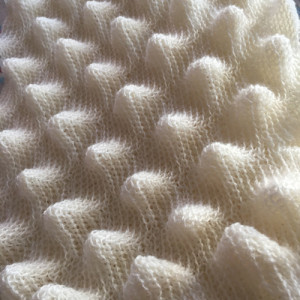
and its related posts :
https://alessandrina.com/2016/01/09/ribber-pitch-a-bit-on-racking-chevrons-horizontal-herringbone/
https://alessandrina.com/2016/01/13/racking-2-vertical-chevrons-herringbone/
https://alessandrina.com/2016/02/02/vertical-racking-3-automating-half-fisherman-in-pattern-2/
My last experiments led to a search for a possible hand-knit “scale” version. Similar shapes may be achieved through holding, but here the effect is created through the use of increases and decreases.
The test for the repeat was knit in a 4-ply acrylic.
As with the machine knit version, the pockets become more pronounced as the fabric relaxes, without blocking.
Garter-stitch was used in the first sample for texture and speed.
Everyone has preferred methods for increasing (M1) or decreasing/ combining 3 stitches into one. I tried picking up from the row below or casting on single stitches (#1), but found the least noticeable methods to my eye, using this yarn and stitch type, were to knit in front and back of the stitch (#3) where an increase was required, and to knit 3 together (#2) for the decreases.
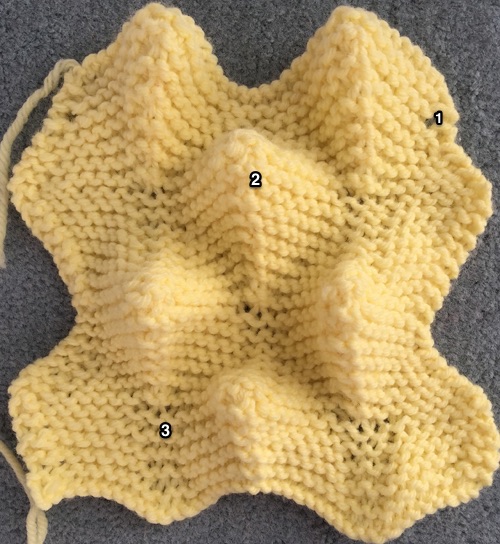 the reverse structure curves in a similar way to the machine-knit
the reverse structure curves in a similar way to the machine-knit 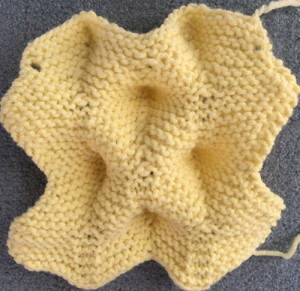
The number of stitches remains constant on each row knit; the chart reflects side panels (A, C). The central 18 stitches (B) may be repeated multiple times to achieve the desired width. Border stitches may be added in any number, and are knit on every row.

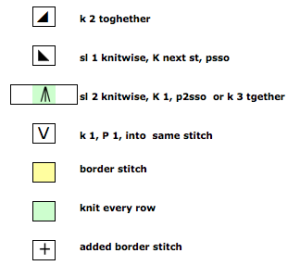 A 2024 chart shifts the repeats and keeps stitch counts constant with M1, K1, M1 increases adding 2 stitches, and Sl 2 knitwise, k1, PSSO or K3 together decreasing 2 stitches in each segment.
A 2024 chart shifts the repeats and keeps stitch counts constant with M1, K1, M1 increases adding 2 stitches, and Sl 2 knitwise, k1, PSSO or K3 together decreasing 2 stitches in each segment. 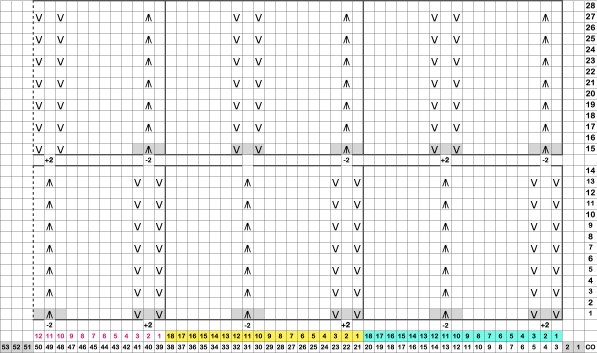 The original fabric changes dramatically when every other row is purled. This swatch was knit with a single-stitch garter stitch border, and I experimented with increases and decreases.
The original fabric changes dramatically when every other row is purled. This swatch was knit with a single-stitch garter stitch border, and I experimented with increases and decreases.
The M1 sts were created by picking a loop up knitwise from the row below for the increase. The slight shift in the pattern center where decreases and increases meet helps define a point on the “scale” shape.
The same yarn and needle size were used as in the first sample.
A softer, thinner yarn knit using a smaller needle size would benefit either variation. To my eye, the all-garter stitch version was more successful and pleasing.
knit as “outside”, default shapes 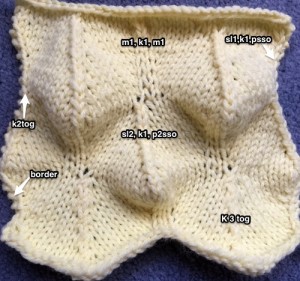 reverse
reverse 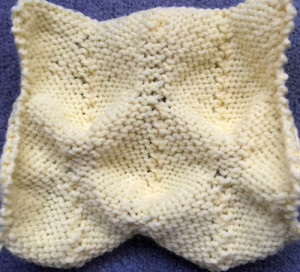 purl as “right side” after poking scales out
purl as “right side” after poking scales out 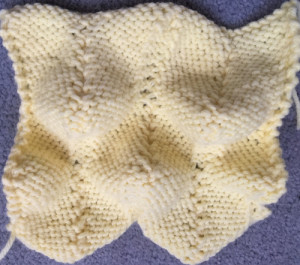 its reverse
its reverse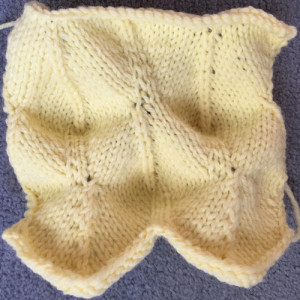
For a less pronounced, “scaly” relative using lace eyelets in the design, please see
https://alessandrina.com/2015/01/09/a-swatch-experiment/ https://alessandrina.com/2015/03/28/machine-knit-dragon-scales-update/
Thank you for pointing that out. I am not really a hand knitter, hence this was in the category of “possible. Looking back at this nowadays, I had already noticed the visual discrepancy in the segments of the swatch itself, am used to machine knitting where the number of stitches is fixed, I will try to review the chart
Love the pattern but it’s gets a bit confusing from row 15
The total stitches needed from that point is 37 instead of 35